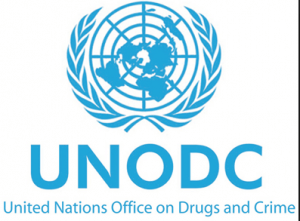Global potential opium production reaches 7,554 tons in 2014 – UN
 The United Nations Office on Drugs and Crime (UNODC), says in 2014, the global potential opium production reached 7,554 tons – the second highest level since the 1930s.
The United Nations Office on Drugs and Crime (UNODC), says in 2014, the global potential opium production reached 7,554 tons – the second highest level since the 1930s.
The rise it says is mainly due to its cultivation increasing significantly in Afghanistan, the main growing country.
In its 2015 World Drug Report, the UN agency notes that some 32.4 million people – or 0.7 per cent of the world’s adult population – are users of pharmaceutical opioids and opiates such as heroin and opium.
“The global seizures of heroin, meanwhile, increased by eight per cent, while illicit morphine seizures decreased by 26 per cent from 2012 to 2013,” it says.
According to the report, while maritime trafficking is not the most widely used mode of smuggling drugs, law enforcement operations at sea have potentially the greatest impact as the average volumes of seizures is proportionally higher.
“In the period 2009-2014, for instance, the average for each seizure by sea was 365kg, while by land (road and rail) it was 107kg and by air 10kg,” it said.
The Report also notes that there is a dynamic shift in the routes used for smuggling opiates, with Afghan heroin reaching new markets.
“Recent seizures suggest that it may have become more common for large shipments of Afghan heroin to be smuggled across the Indian Ocean into East and Southern Africa. West Africa continues to be a trans-shipment area for smuggling cocaine across the Atlantic into Europe, and Eastern Europe is emerging as a transit area and as a destination for this drug,” it adds.
The report indicating that drug use prevalence continues to be stable around the world, estimates that a total of 246 million people – slightly over 5 per cent of those aged 15 to 64 years worldwide – used an illicit drug in 2013.
“Some 27 million people are problem drug users, almost half of whom are people who inject drugs (PWID). An estimated 1.65 million of people who inject drugs were living with HIV in 2013. Men are three times more likely than women to use cannabis, cocaine and amphetamines, while women are more likely to misuse prescription opioids and tranquillizers,” it says.
By Emmanuel K. Dogbevi
